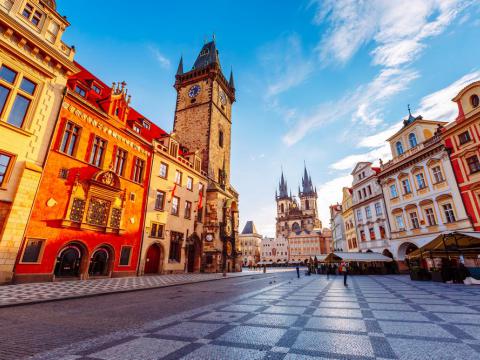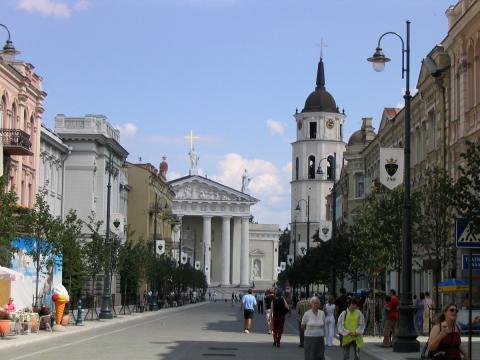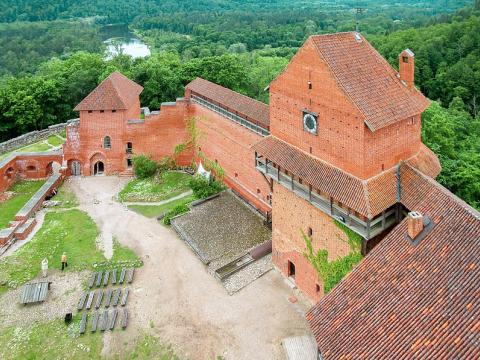Czech Republic in a Nutshell
Czechia (esko), also known as the Czech Republic (Czech: eská republika), is a landlocked country in Central Europe. It is a small country with a long and eventful past. Czechs, Germans, Slovaks, Italian stonemasons and stucco workers, French tradesmen, and Napoleon's army deserters have all lived and worked here, affecting one another. For decades, they worked together to cultivate their soil, producing works that grace this small country with hundreds of ancient castles, monasteries, and stately mansions, as well as entire towns that appear to be extensive artifacts. The Czech Republic is home to a plethora of architectural treasures as well as stunning forests and mountains.
For the first four centuries of the first millennium, the Czech area was populated by Celtic tribes known as the Boii. The Celts were succeeded by post-Roman Germanic tribes. Later, Slavs arrived, and in the ninth century, they founded the Great Moravian Empire, which stretched from Germany to Ukraine. Following the fall of Great Moravia, the Bohemian Duchy (later Kingdom) was created, resulting in a territorial entity that was nearly identical to the modern Czech Republic. With the rise of the Habsburgs came the incorporation of the Czech lands into the Austrian Empire, and later Austria-Hungary, as well as a large influx of German immigrants. The mineral springs of the West Bohemian Spa Triangle spawned "health tourism," with both Habsburg and non-Habsburg royals visiting to treat their different ailments.
Following World War I, the former Austro-Hungarian Empire's closely associated Czechs and Slovaks created the new nation of Czechoslovakia. During the interwar years, the new country's leaders were constantly preoccupied with meeting the demands of the republic's other ethnic minorities, most notably the Sudeten Germans and Hungarians. A strained relationship with the German minority (20% of the total population) was a specific issue that Adolf Hitler exploited and used as "rationale" for the nation's dismemberment prior to the outbreak of World War II. During the war, Germany invaded the country and brutally occupied it.
Following the Potsdam Conference, Czechoslovakia forcibly expelled the majority of its Germans and many ethnic Hungarians. However, the country was fortunate in that it survived the war relatively unscathed, having escaped the fate of the huge air bombardments and invasions that leveled much of the historic neighboring cities in Germany, Austria, Poland, and Belarus. The nation came under Soviet control and remained so by force of arms until 1989. (see Cold War Europe).
An invasion by Warsaw Pact troops in 1968 put an end to the country's leaders' attempts to liberalize Communist party rule and establish "socialism with a human face." The following year, anti-Soviet protests ushered in an era of brutal repression and conservatism within the party ranks known as "normalisation." The communist government was deposed in a peaceful Velvet Revolution in November 1989.
The country experienced a "velvet divorce" on January 1, 1993, into its two national components, the Czech Republic and Slovakia. The Czech Republic, a member of NATO since 1999 and the EU since 2004, has pushed toward participation in global markets, which presents both opportunities and risks; however, unemployment and population loss are rampant in the Czech countryside due to better job opportunities in large cities such as Prague.
The Czech flag is the same as that of Czechoslovakia. It was reintroduced in 1993.
The primary language is, unsurprisingly, Czech. As there is a sizable Slovak minority, the Slovak language is often heard, and both languages are mutually intelligible up to a point. Czechs are very proud of their language, so you won't find many signs in English even in Prague (outside of the main tourist areas). Many older people, especially outside of major cities, are often unable to converse in English, so it's a good idea to learn some Czech or Slovak before you arrive. However, the majority of young people are fluent in English.
The majority of Czechs speak a second and, in some cases, a third language. The most widely known language is English, with German being the most widely spoken second language among older people. During the communist period, Russian was required in all schools, so most people born before 1975 speak at least some Russian (and often pretty well). However, the language's association with the communist period and the Soviet-led invasion in 1968 has given it a negative connotation. Some schools also teach other languages, such as French or Spanish.
The Czech and Slovak languages are extremely difficult for English speakers to understand, particularly if you are unfamiliar with other Slavic languages, such as Russian. However, if you can learn the alphabet (and the accompanying letters with accents), then pronunciation is simple because it is consistent - Czechs and Slovaks pronounce every letter of a word, with emphasis on the first syllable. The combination of consonants in some words can appear to be mind-bogglingly difficult, but it is well worth the effort!
The Czech language has numerous regional dialects, especially in Moravia. Some dialects are so dissimilar that they can be confused even by a native Czech speaker from another country. However, all Czechs understand and should be able to speak standard Czech (as spoken on TV, published in newspapers, and taught in schools) (but some are too proud to stop using their local dialect). Some of them can't even understand standard Czech but can write it perfectly.
Czech and Slovak vocabularies are identical, with a few words that are not understood. The younger generation born after Czechoslovakia's breakup is growing apart in the two separate countries, and they have difficulty understanding one another.
Last modified on 04/25/2021 - 05:33
Towns
Currently there are no places in Czech Republic.
Currently there are no articles about Czech Republic.
Currently there are no trip reports about Czech Republic.
Currently there are no photo of Czech Republic.
Currently there are no videos of Czech Republic.





